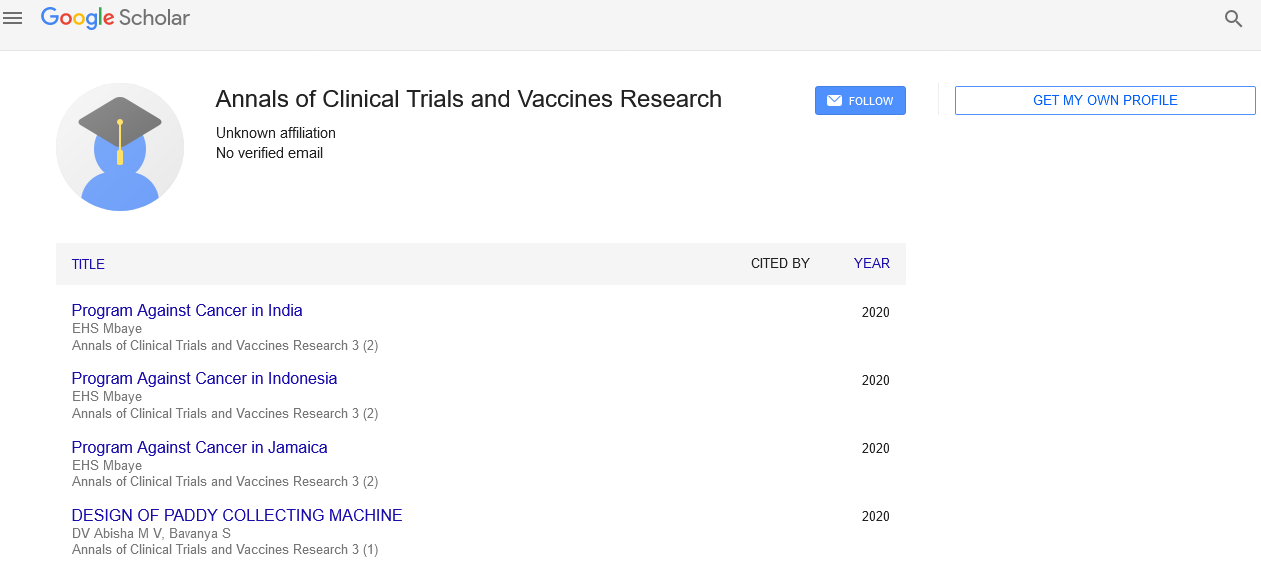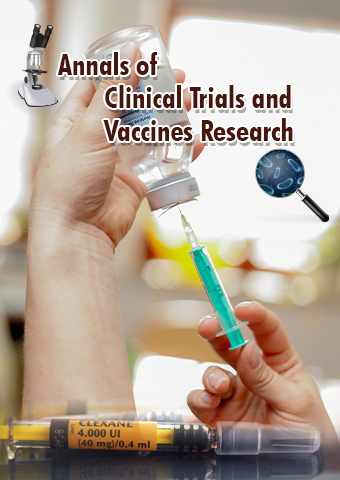Perspective - Annals of Clinical Trials and Vaccines Research (2024) Volume 14, Issue 5
Patient Responses to Vaccines: A Comprehensive Analysis
- Corresponding Author:
- Mehyam Santov
Department of Biotechnology,
University of Vilnius,
Vilnius,
Lithuania
E-mail: sanots18selfrin@gmail.com
Received: 27-Sep-2024, Manuscript No. ACTVR-24-148947; Editor assigned: 02-Oct-2024, Pre QC No. ACTVR-24-148947 (PQ); Reviewed: 16-Oct-2024, QC No. ACTVR-24-148947; Revised: 21-Oct-2024, Manuscript No. ACTVR-24-148947 (R); Published: 28-Oct-2024, DOI: 10.37532/ ACTVR.2024.14(5).277-278
Introduction
Vaccination remains one of the most effective public health tools in preventing infectious diseases, reducing mortality, and mitigating the spread of pathogens globally. However, patient responses to vaccines vary widely based on medical, psychological, social, and demographic factors. Understanding these responses is crucial for improving vaccination rates, fostering trust in public health programs, and addressing vaccine hesitancy.
Description
Physiological responses to vaccines
One of the most immediate responses to vaccination is the body’s physiological reaction. Vaccines work by introducing a weakened or inactivated form of the pathogen, or a component of it, prompting the immune system to build a defense against future infections. This immune response, while highly protective in the long term, can lead to short-term side effects.
Common reactions: Patients often experience mild side effects following vaccination, which indicate the body’s immune system is responding to the antigen. These side effects may include:
• Soreness or redness at the injection site
• Fatigue
• Low-grade fever
• Headaches
• Muscle aches
Such symptoms are typically short-lived and resolve within a few days. They reflect the immune system’s activation, producing antibodies and priming the body to recognize the pathogen in the future.
Adverse reactions
Though vaccines are generally safe, a small percentage of patients may experience more severe side effects. These can range from allergic reactions (such as anaphylaxis) to neurological symptoms in rare cases. Monitoring systems like the Vaccine Adverse Event Reporting System (VAERS) in the U.S. play a crucial role in tracking these responses, ensuring vaccines are continually evaluated for safety.
Psychological responses
The psychological response to vaccines is heavily influenced by individual beliefs, trust in healthcare systems, and exposure to misinformation. Fear of needles, anxiety about potential side effects, and vaccine hesitancy fueled by misinformation have shaped public attitudes toward vaccines.
Vaccine hesitancy: Vaccine hesitancy refers to the delay in acceptance or refusal of vaccines despite availability. This phenomenon is multifaceted and can be driven by:
Inactivated vaccines: These contain pathogens that have been killed or inactivated. The immune system still recognizes the dead pathogens and mounts a response. An example is the Inactivated Polio Vaccine (IPV) or the hepatitis A vaccine. These vaccines often require multiple doses to maintain immunity.
Subunit, recombinant, polysaccharide, and conjugate vaccines: These vaccines use specific pieces of the pathogen-such as its protein, sugar, or capsid (a casing around the pathogen). Because these vaccines only contain parts of the pathogen, they are safer and can be given to people with weakened immune systems. Examples include the HPV and hepatitis B vaccines.
Fear of side effects: Misinformation regarding the risks associated with vaccines can lead to exaggerated fears, even when vaccines are proven safe.
Religious or cultural beliefs: Certain communities oppose vaccination on the grounds of faith or cultural practices.
Distrust in government and healthcare institutions: Historical instances of medical exploitation or systemic racism in healthcare have led some groups, particularly in marginalized communities, to be suspicious of vaccine campaigns.
Needle phobia: A subset of patients also experiences an extreme fear of needles (trypanophobia), which can cause panic, fainting, or avoidance of vaccination altogether. Addressing this fear through cognitive behavioral therapy, distraction techniques, or offering alternative delivery methods, like nasal vaccines, is critical for these patients.
Social influences on vaccine acceptance
Patients’ responses to vaccines are also shaped by social dynamics, including the influence of family, peers, and community leaders. The role of healthcare professionals, government messaging, and media platforms further mold public perceptions.
Family and peer influence: Family and friends can significantly influence a person’s attitude towards vaccination. For instance, parents’ decisions about vaccinating their children often reflect their own experiences or advice from their social circles. Similarly, peer pressure can either encourage or discourage individuals from getting vaccinated, especially in adolescent and young adult populations.
Community leaders and public figures: Community and religious leaders can play a vital role in vaccine acceptance. Their endorsements can sway public opinion, particularly in regions where healthcare systems are viewed with suspicion. Conversely, negative statements by influential figures can fuel skepticism and decrease vaccination rates, as seen during some COVID-19 vaccination campaigns.
Demographic variations in vaccine responses
Patient responses to vaccines also vary based on demographic factors, including age, gender, ethnicity, and socioeconomic status.
Age: The age of patients influences how they respond to vaccines. Infants and young children typically receive vaccines as part of their immunization schedule, and their immune systems tend to respond robustly. However, elderly individuals may have a less vigorous immune response due to immunosenescence, the natural decline of the immune system with age. This has led to the development of highdose vaccines for older populations, particularly for influenza.
Gender: Research suggests that biological differences between males and females can lead to varied immune responses to vaccines. Women generally mount stronger immune responses to vaccinations, which can lead to greater efficacy but also a higher likelihood of experiencing side effects. Hormonal differences, genetic factors, and differences in exposure to infections during life contribute to this variation.
Ethnicity and socioeconomic status: Ethnic and racial disparities in vaccine uptake and response are well-documented. Communities of color, particularly in the U.S., have shown lower vaccination rates due to historical mistrust in medical institutions, lack of access to healthcare, and socioeconomic barriers. Addressing these disparities requires culturally sensitive public health interventions and improved access to vaccines in underserved areas.
Conclusion
The production of drugs is a complex and multifaceted endeavor, fraught with numerous challenges that span scientific, regulatory, economic, and ethical dimensions. Despite these challenges, the pharmaceutical industry continues to innovate and develop new treatments that improve and save lives. Addressing these challenges requires a collaborative effort among researchers, manufacturers, regulators, and policymakers. By working together, stakeholders can overcome the hurdles in drug production and ensure.

